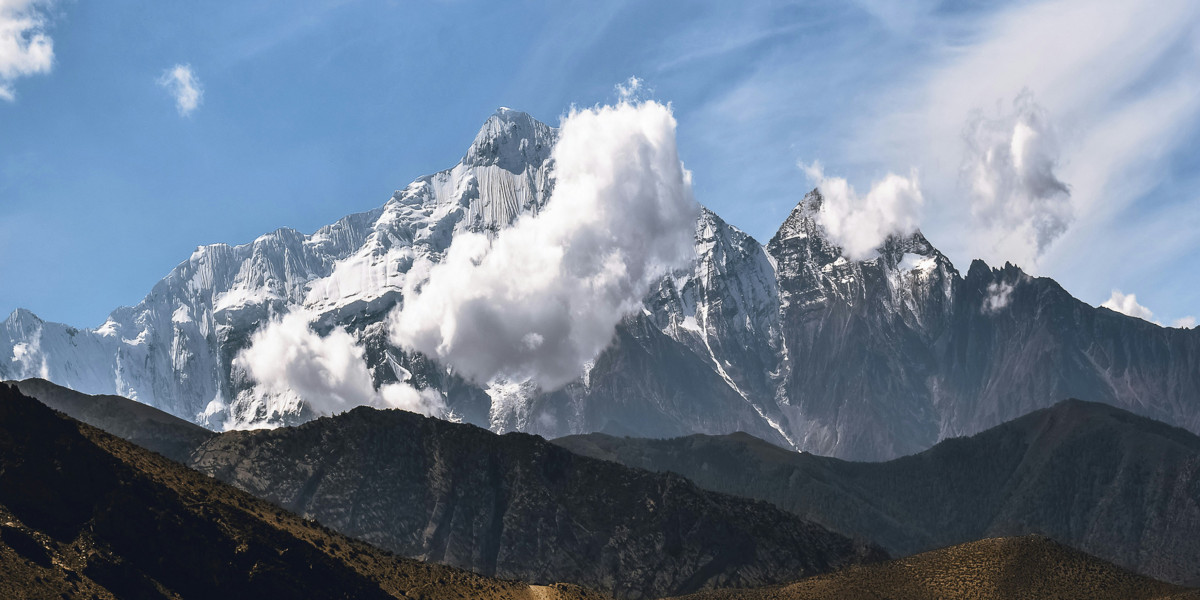Mera Peak, located in the breathtaking Everest area, reaches at 6,476 meters (21,247 ft) and is Nepal's highest hiking peak. Mera Peak, with its spectacular panoramic views of five of the world's highest mountains—Everest, Lhotse, Cho Oyu, Makalu, and Kangchenjunga—is a dream location for explorers looking for a high-altitude challenge. This blog will explain all you need to know about the Mera Peak climb, from preparation to ascent and descent.
Why Choose Mera Peak?
Stunning Scenery
The trek to Mera Peak takes you through diverse landscapes, from lush rhododendron forests and terraced fields to high-altitude alpine terrain. The climb itself offers spectacular views of some of the highest peaks on the planet, making it a photographer's paradise.
Less Crowded
Compared to the more famous Everest Base Camp trek, the Mera Peak climb is less crowded, providing a more serene and immersive experience. You'll have the opportunity to connect with nature and enjoy the tranquility of the high Himalayas.
High-Altitude Experience
Climbing Mera Peak provides valuable high-altitude mountaineering experience. It's an excellent stepping stone for those aspiring to tackle more technical peaks in the future, offering a taste of high-altitude climbing without the need for extensive technical skills.
Preparing for the Mera Peak Climb
Physical Fitness
Climbing Mera Peak is physically demanding and requires a good level of fitness. Regular cardiovascular training, strength training, and endurance exercises are essential. Hiking, running, cycling, and weightlifting can help build the necessary stamina and strength.
Acclimatization
Proper acclimatization is crucial for a successful ascent. The Mera Peak trek includes several acclimatization days, allowing your body to adjust to the high altitude gradually. It's important to follow a gradual ascent and stay hydrated to minimize the risk of altitude sickness.
Gear and Equipment
Essential gear for the Mera Peak climb includes:
- Clothing: Layered clothing for varying temperatures, including thermal base layers, fleece jackets, down jackets, waterproof outer layers, and insulated gloves.
- Footwear: Sturdy, waterproof trekking boots and crampons for the summit push.
- Climbing Gear: Ice axe, harness, carabiners, and ropes (usually provided by trekking companies).
- Other Essentials: Sunglasses, sunscreen, a good-quality sleeping bag, a backpack, and trekking poles.
Permits and Guides
Climbing Mera Peak requires several permits, including the Makalu Barun National Park permit, the Mera Peak climbing permit, and the Khumbu Pasang Lhamu Rural Municipality permit. It's highly recommended to hire an experienced guide and join a reputable trekking company for a safe and well-organized climb.
The Mera Peak Climb Itinerary
Day 1: Arrival in Kathmandu
Arrive in Kathmandu, the capital city of Nepal. Spend the day exploring the city's vibrant streets, visiting historical sites, and preparing for the trek. Attend a pre-trek briefing with your guide.
Day 2: Flight to Lukla and Trek to Paiya
Fly from Kathmandu to Lukla, a thrilling flight offering stunning views of the Himalayas. Begin the trek to Paiya, passing through picturesque villages and lush forests.
Day 3-5: Trek to Kothe
Continue trekking through beautiful landscapes, crossing suspension bridges and ascending through rhododendron and bamboo forests. The trail leads you to Kothe, a charming village in the Hinku Valley.
Day 6-8: Acclimatization and Trek to Khare
Spend a day in Thangnak for acclimatization before trekking to Khare, the base camp for Mera Peak. Enjoy stunning views of Mera Peak and surrounding mountains.
Day 9: Trek to Mera Base Camp
Trek to Mera Base Camp, situated at 5,350 meters (17,552 feet). The trail involves crossing the Mera La Pass, offering spectacular panoramic views.
Day 10: Acclimatization at Mera Base Camp
Spend a day at Mera Base Camp for acclimatization. This is a crucial step to ensure your body adjusts to the high altitude before the summit push.
Day 11: Trek to High Camp
Trek to High Camp at 5,780 meters (18,963 feet). The trail is challenging, with steep ascents and breathtaking views. Prepare for the summit push the next day.
Day 12: Summit Mera Peak and Return to Khare
Wake up early for the summit push. Climb through snow and ice, using crampons and ice axes. Reach the summit and enjoy the panoramic views of the Himalayas. Descend back to Khare.
Day 13-15: Descent to Lukla
Trek back to Lukla, retracing your steps through the beautiful landscapes. Reflect on the incredible journey and celebrate your achievement.
Day 16: Flight to Kathmandu
Fly back to Kathmandu. Spend the day relaxing, shopping for souvenirs, and enjoying the city's vibrant culture.
Day 17: Departure
Depart from Kathmandu, carrying unforgettable memories of the Mera Peak climb.
Conclusion
Climbing Mera Peak is a challenging yet rewarding adventure that offers stunning views, a sense of accomplishment, and a unique high-altitude experience. With proper preparation, physical fitness, and acclimatization, you can successfully reach the summit of the highest trekking peak in Nepal. Whether you're an experienced mountaineer or a trekking enthusiast, the Mera Peak climb is an unforgettable journey that will leave you with memories to last a lifetime.








